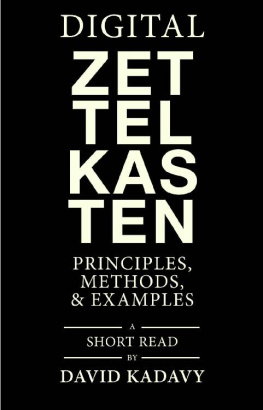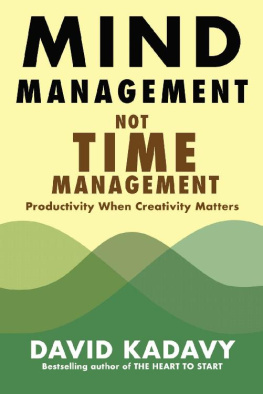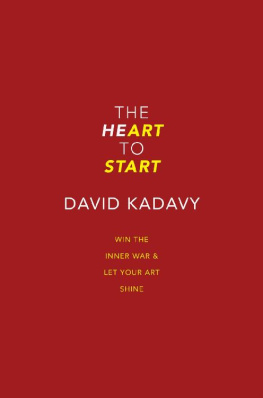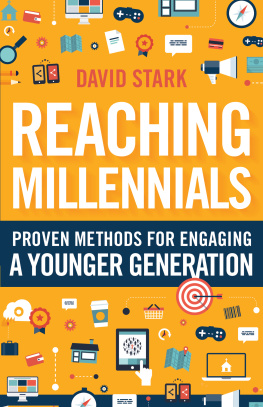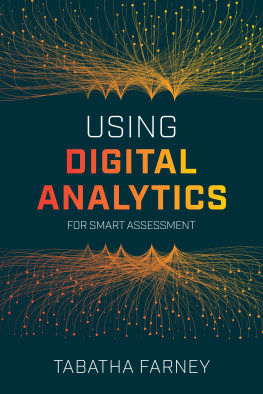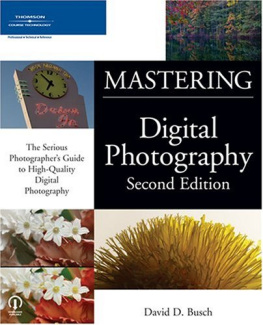David Kadavy - Digital Zettelkasten: Principles, Methods, & Examples
Here you can read online David Kadavy - Digital Zettelkasten: Principles, Methods, & Examples full text of the book (entire story) in english for free. Download pdf and epub, get meaning, cover and reviews about this ebook. year: 2021, publisher: Kadavy, Inc., genre: Romance novel. Description of the work, (preface) as well as reviews are available. Best literature library LitArk.com created for fans of good reading and offers a wide selection of genres:
Romance novel
Science fiction
Adventure
Detective
Science
History
Home and family
Prose
Art
Politics
Computer
Non-fiction
Religion
Business
Children
Humor
Choose a favorite category and find really read worthwhile books. Enjoy immersion in the world of imagination, feel the emotions of the characters or learn something new for yourself, make an fascinating discovery.
- Book:Digital Zettelkasten: Principles, Methods, & Examples
- Author:
- Publisher:Kadavy, Inc.
- Genre:
- Year:2021
- Rating:4 / 5
- Favourites:Add to favourites
- Your mark:
- 80
- 1
- 2
- 3
- 4
- 5
Digital Zettelkasten: Principles, Methods, & Examples: summary, description and annotation
We offer to read an annotation, description, summary or preface (depends on what the author of the book "Digital Zettelkasten: Principles, Methods, & Examples" wrote himself). If you haven't found the necessary information about the book — write in the comments, we will try to find it.
Digital Zettelkasten: Principles, Methods, & Examples — read online for free the complete book (whole text) full work
Below is the text of the book, divided by pages. System saving the place of the last page read, allows you to conveniently read the book "Digital Zettelkasten: Principles, Methods, & Examples" online for free, without having to search again every time where you left off. Put a bookmark, and you can go to the page where you finished reading at any time.
Font size:
Interval:
Bookmark:


Theres a great video floating around the web of Steve Jobs, in the 1980s, talking about his vision for personal computers. He says he saw a study illustrating the distances various animals traveled per unit of energy. The condor, he says, used the least energy to move a kilometer. And humans came in with a rather unimpressive showing. But then the study tested the efficiency of a human on a bicycle. As Jobs recalls, a human on a bicycle blew the condor away completely off the top of the charts. And thats what a computer is to me....its the equivalent of a bicycle for our minds.
Has the computer fulfilled this promise? Is it a bicycle for the mind? With some of the worlds smartest psychologists and computer scientists employed with the aim of making online media more engaging, computers are often more like bumper cars for the mind.
My computer doesnt always feel like a bicycle for the mind, but it does when I use my Zettelkasten. My digital Zettelkasten allows me to seamlessly engage my thoughts with a high-powered database of the most interesting things Ive read or thought things I know I know, but which are just beyond the reach of my consciousness. Its what productivity consultant Ari Meisel would call an external brain. Furthermore, when I create notes in my Zettelkasten, Im effortlessly able to conjure insights that would have called for more mental energy than I have in the moment. A bicycle turns small efforts into tremendous output. A Zettelkasten especially a digital one is a bicycle for the mind.
While computers often feel like bumper cars for the mind, its not the fault of the computers. As Nir Eyal has pointed out in Indistractible, humans have been prone to distractions for all of recorded history.
But now more than ever, our world is full of tiny bites of information. The first American newspaper was published monthly, but information became a commodity to be sold when the telegraph connected the globe in the mid 1800s. Were attracted to tiny bites of information, and social media apps and news headlines trade in those tiny bites. Its a vicious cycle.
When we consider writing a book or article, we constantly have to choose between doing that work or grazing on tiny bites of information. When we make this mental calculation, its hard for big, daunting projects to compete with little dopamine hits.
But the Zettelkasten method hijacks our short attention spans to help us be productive. If you have a few minutes in the waiting room at the dentist, which are you going to choose: dig into a big project such as reading a dense book, or kill time with social media? When you have a digital Zettelkasten, theres a third option: do small things with small notes, straight from your phone. The tiny bites youll be consuming happen to be the most interesting things youve ever read, or the most compelling thoughts youve ever had. Yet instead of these tiny actions adding up to essentially nothing, they feed your curiosity in a productive way and drive your projects forward.
I am a non-fiction self-help author. I have a Zettelkasten for one reason: To do my job.
I've compiled this knowledge, and thought through the considerations presented in this book, primarily to that end. I've thought about how best to build a digital Zettelkasten for your workflow because that's what I've done for my own workflow. So, that has some limitations. I've tried my best to think about how the goals of others may differ from my own, but ultimately, I only know what's important to me.
I was motivated to write this book because when I started my Zettelkasten, I struggled to make sense of the information available. I was captivated by the idea of leveraging notes to retain knowledge, organize ideas, and write. I had had false starts with other techniques (such as the commonplace book author Ryan Holiday espouses). It was only because I had already looked for what the Zettelkasten method promised that I was able to persevere and wade through confusing YouTube videos, web articles, and forum discussions. I constructed a first-principles understanding of the technique, and was able to apply it to my own workflow.
A reader recently sent me this note:
I don't know if it's meditation or you reaching a new level professionally, but I feel like your writing is on FIRE!
There are a variety of reasons my writing suddenly got better, such as meditation as this reader observed. But if I had to choose one reason, it's because I finally found a system that lets me leverage technology to connect the thoughts on the tip of my brain with things I just know I read about somewhere, but can't think of in the moment. Instead of using my brain power to try to remember things, I'm using it to write better articles, newsletters, and books. I finally found a bicycle for my mind.
I didn't set out to write this book to be the definitive guide to all things Zettelkasten. The method is relatively new to me, and has seen a recent surge in interest. The most helpful book I came across in building my own Zettelkasten was Snke Ahrens How to Take Smart Notes. But I still had to figure out a lot on my own. This book is the guide I wish I had when I was starting.
So that's one caveat: I'm an author, and this book is a product of me trying to be better at my job. You may be an academic, a journalist, or a comedian. Or, you may just want to retain what youve read. I've tried to think about what might be important to you, but I can't be someone else. That will affect the advice I give in this book.
The other caveat is about technology: The moment I publish this book, the technology I talk about will have changed. When it comes to specifics about technology, nothing beats a web tutorial on that software, or playing with it yourself. So, I'm trying to straddle the line between what you need to think about no matter the technology and what you specifically need to do with what tool. I titled this book Digital Zettelkasten: Principles, Methods, & Examples because Im going to talk mostly about using the Zettelkasten method with digital tools, and Im going to talk about specific software as little as possible. Instead, Ill talk on a higher level about the principles and methods to think about as you design your digital Zettelkasten, and decide on what software features you need. (Ill also share actual examples, demonstrating how notes in my Zettelkasten lead to new insights.)
I faced a similar future-proofing challenge with my first book: Design for Hackers, is a book that touches on rapidly-changing web-design technology, yet people still enjoy it a decade later. I hope this book can be useful both today and far into the future.
If you're reading a book about how to build your own Zettelkasten, you probably have a general idea what one is, so I won't go too deep into this.
Zettelkasten is German for "slip box" (Plural: Zettelksten). In analog form, a Zettelkasten is literally a box filled with slips of paper, each slip with a note on it, as well as metadata used to organize those notes. The Zettelkasten method is a way of organizing paper in a non-hierarchical way. Instead of being restricted to keeping a note only under one category, or having to make multiple copies of the same note to put in various places, notes are organized so that you can arrive at one individual note through various routes, and that note can lead you to various other notes much like today's internet, but in paper form.
Font size:
Interval:
Bookmark:
Similar books «Digital Zettelkasten: Principles, Methods, & Examples»
Look at similar books to Digital Zettelkasten: Principles, Methods, & Examples. We have selected literature similar in name and meaning in the hope of providing readers with more options to find new, interesting, not yet read works.
Discussion, reviews of the book Digital Zettelkasten: Principles, Methods, & Examples and just readers' own opinions. Leave your comments, write what you think about the work, its meaning or the main characters. Specify what exactly you liked and what you didn't like, and why you think so.

